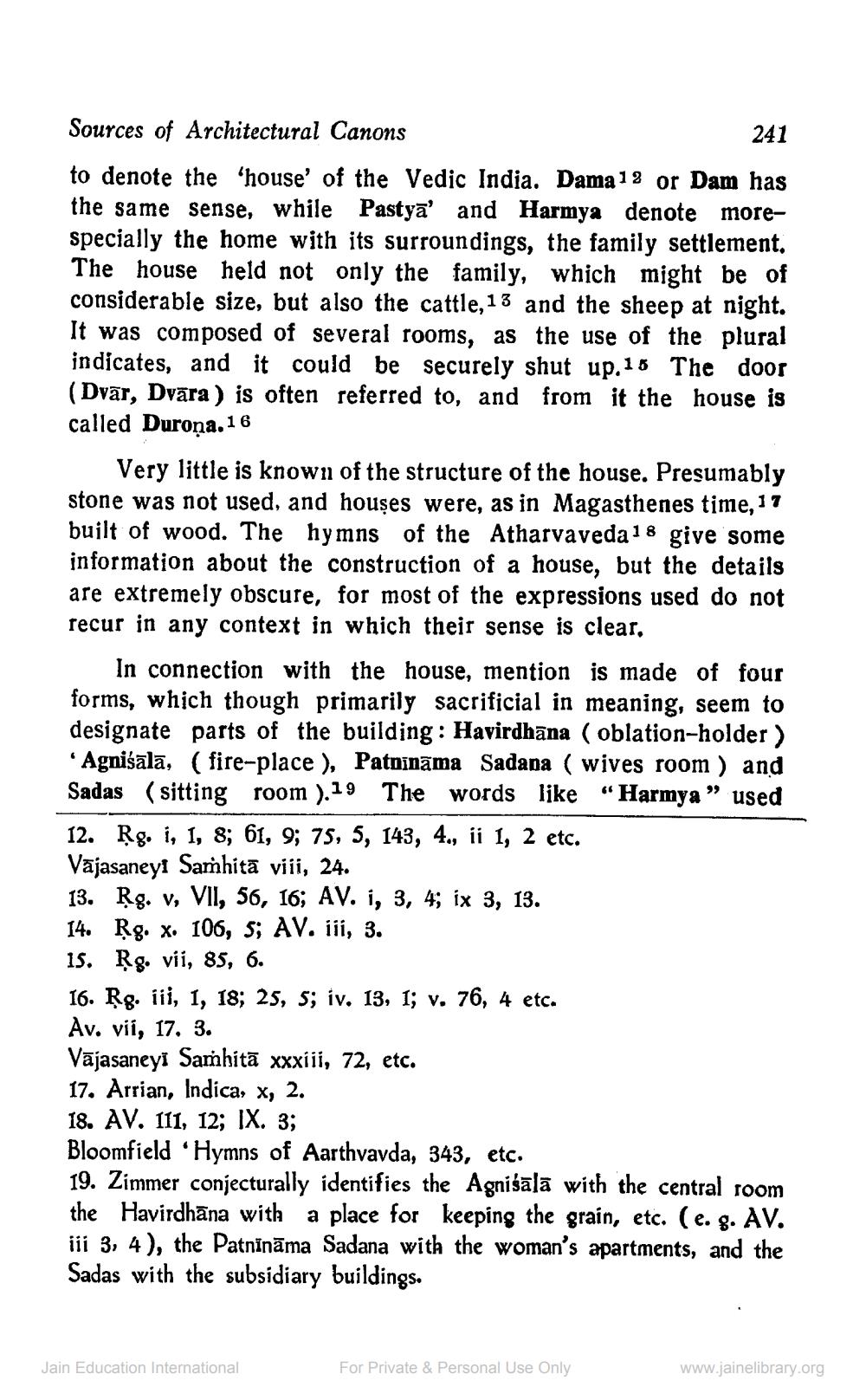________________
241
Sources of Architectural Canons to denote the 'house' of the Vedic India. Dama 18 or Dam has the same sense, while Pastyā' and Harmya denote morespecially the home with its surroundings, the family settlement. The house held not only the family, which might be of considerable size, but also the cattle, 13 and the sheep at night. It was composed of several rooms, as the use of the plural indicates, and it could be securely shut up.18 The door (Dvār, Dvāra) is often referred to, and from it the house is called Duroņa.16
Very little is known of the structure of the house. Presumably stone was not used, and houses were, as in Magasthenes time, 17 built of wood. The hymns of the Atharvaveda 18 give some information about the construction of a house, but the details are extremely obscure, for most of the expressions used do not recur in any context in which their sense is clear.
In connection with the house, mention is made of four forms, which though primarily sacrificial in meaning, seem to designate parts of the building : Havirdhāna ( oblation-holder ) 'Agniśālā, (fire-place ), Patnīnāma Sadana ( wives room ) and Sadas (sitting room ).19 The words like “Harmya” used 12. Rg. i, 1, 8; 61, 9; 75, 5, 143, 4., ii 1, 2 etc. Vājasaneyi Samhitā viii, 24. 13. Rg. v, VII, 56, 16; AV. I, 3, 4; ix 3, 13. 14. Rg. X. 106, S; AV. iii, 3. 15. Rg. vii, 85, 6. 16. Rg. iii, 1, 18; 25, s; iv. 13, 1; v. 76, 4 etc. Av. vii, 17, 3. Vājasaneyi Samhitā xxxiii, 72, etc. 17. Arrian, Indica, x, 2. 18. AV. 111, 12; IX. 3; Bloomfield Hymns of Aarthvavda, 343, etc. 19. Zimmer conjecturally identifies the Agniśālā with the central room the Hayirdhāna with a place for keeping the grain, etc. (e. g. AV. iii 3, 4), the Patnīnāma Sadana with the woman's apartments, and the Sadas with the subsidiary buildings.
Jain Education International
For Private & Personal Use Only
www.jainelibrary.org




